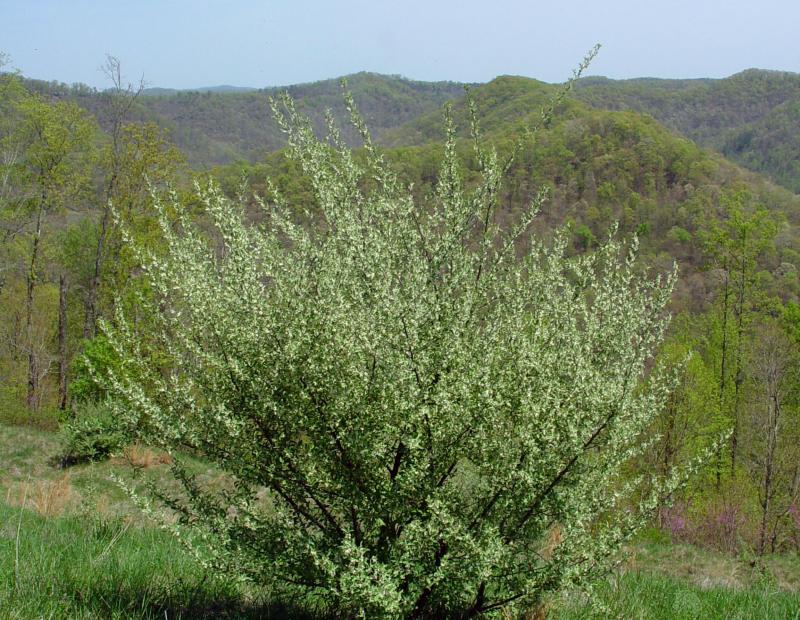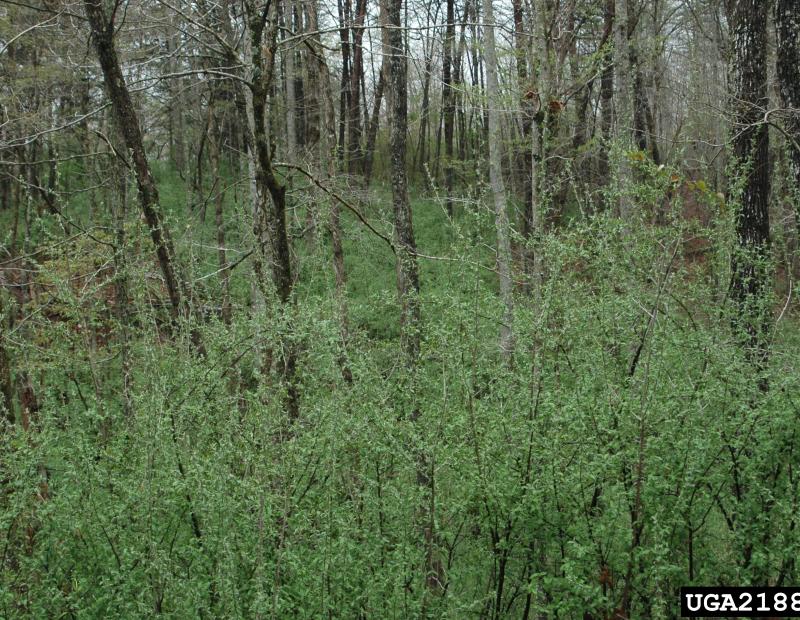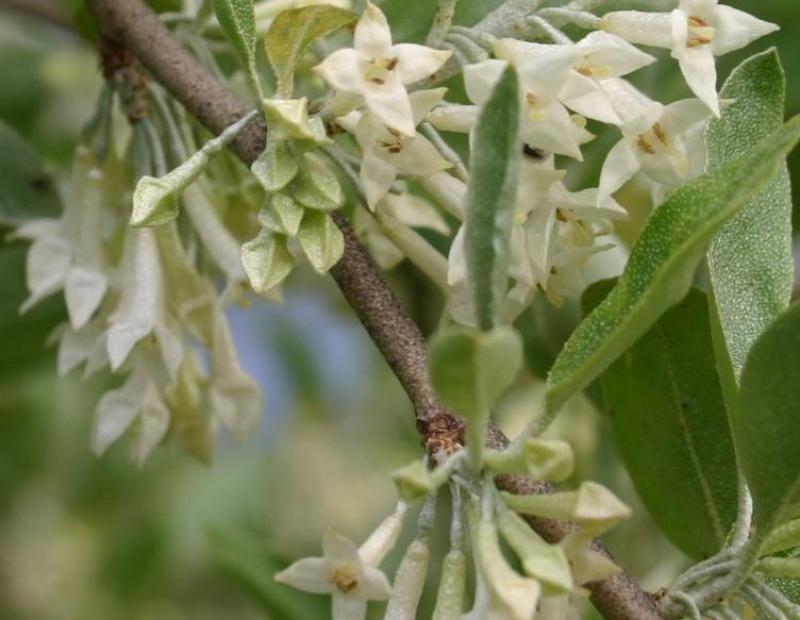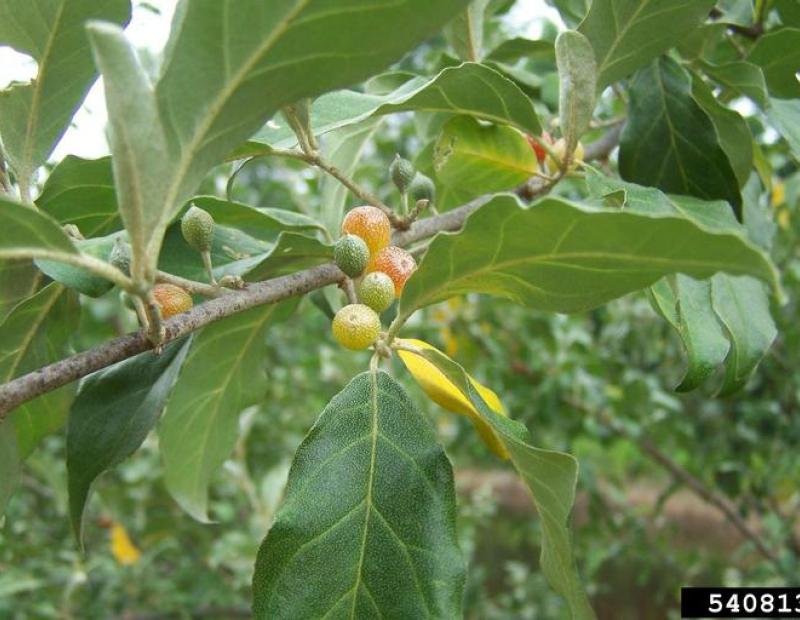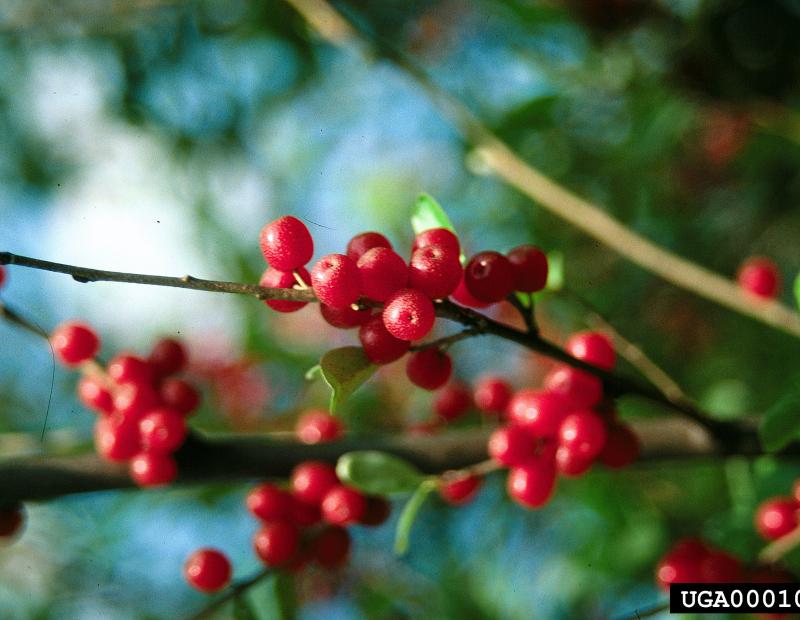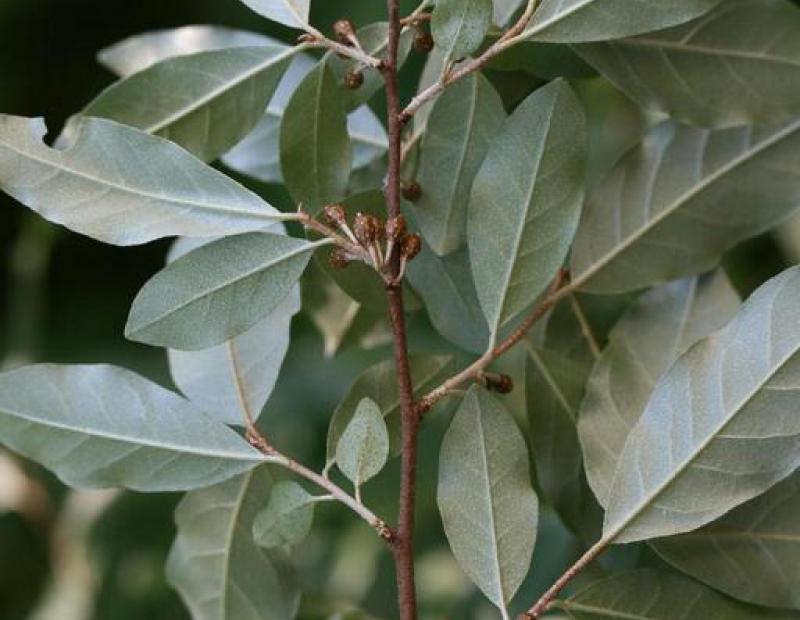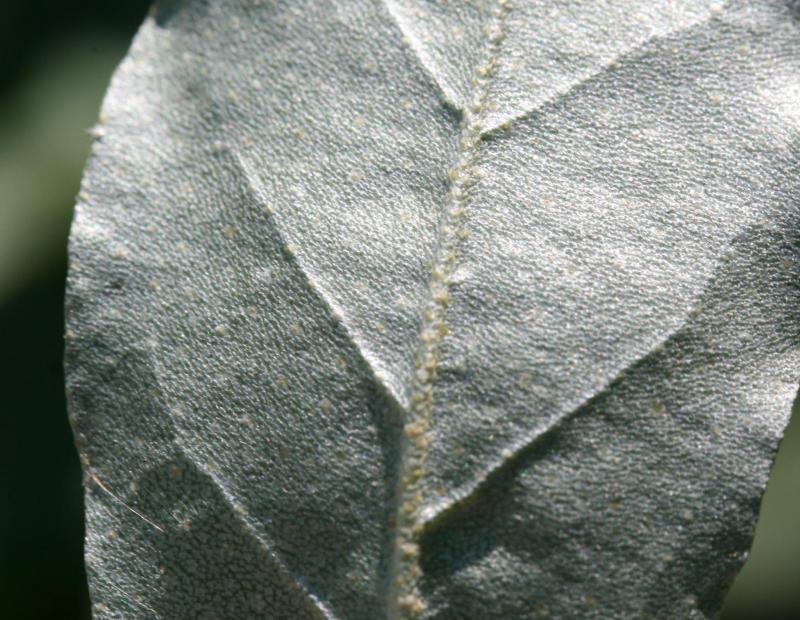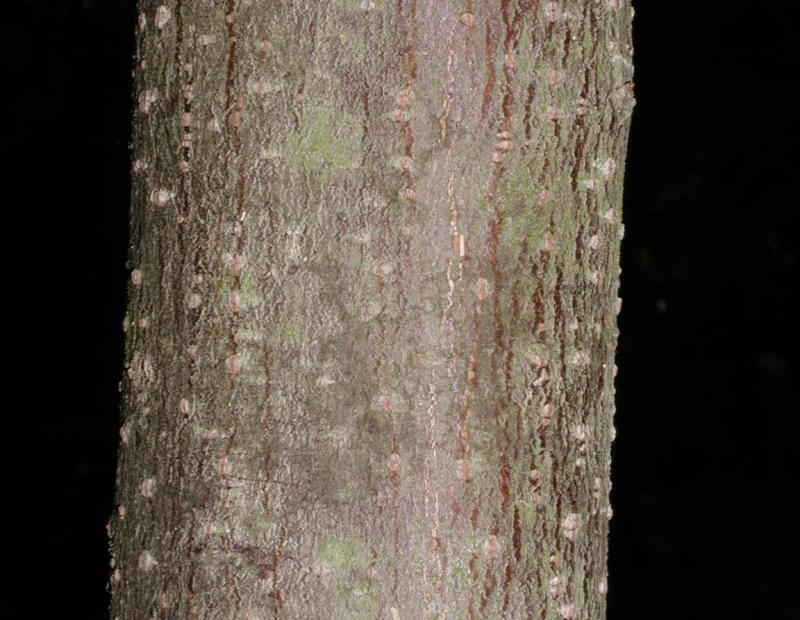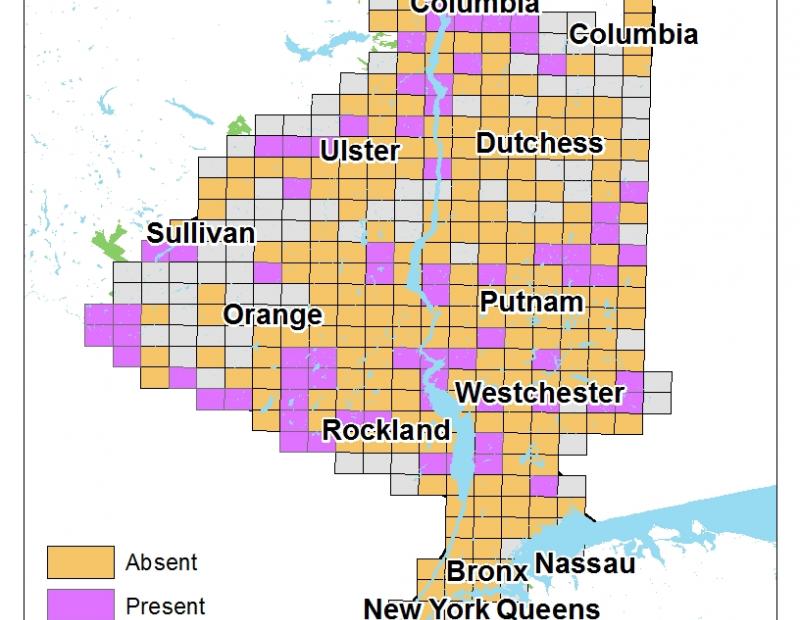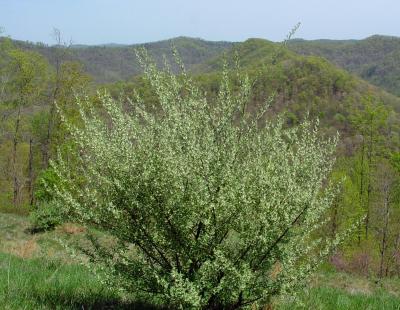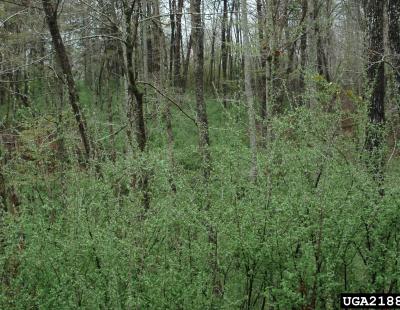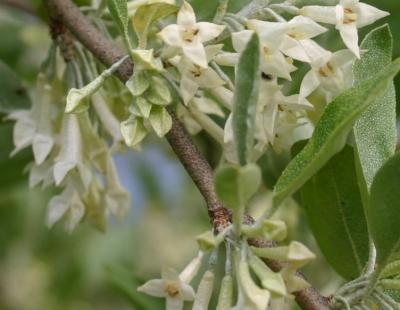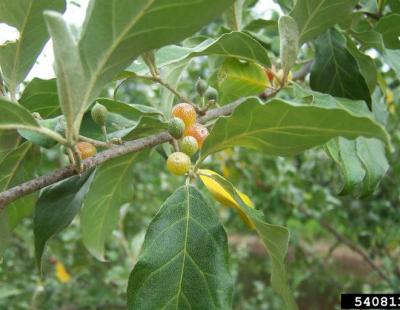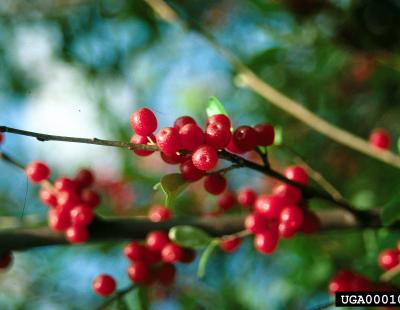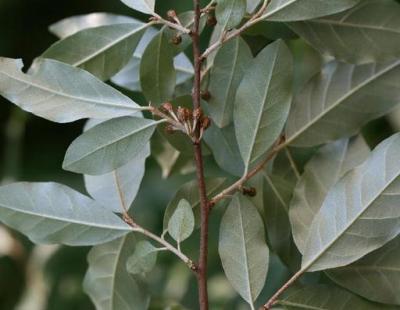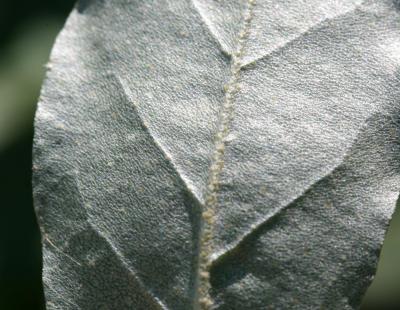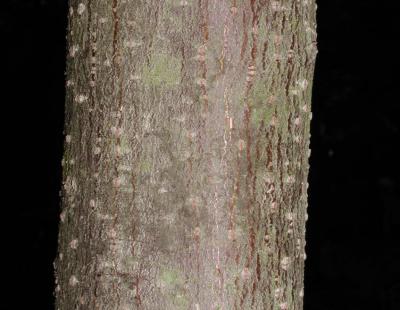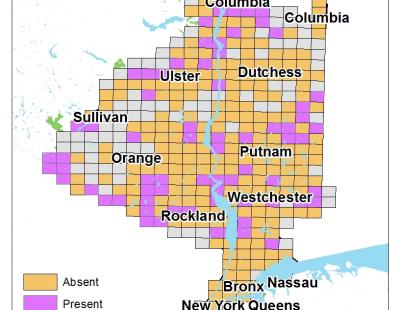Vertical Tabs
Autumn-olive is a many-branched, deciduous shrub or shrubby tree, growing 10 to16 feet tall. Leaves are alternate, simple, and variable in size, ranging from 0.4 to 3 inches long and 0.4 to 1.6 inches wide. Thorns several inches in length are formed on spur branches. Autumn-olive fruits are single-seeded drupes, 0.2 to 0.4 inches in diameter, produced on pedicels. (1)
Autumn olive out-competes and displaces native plants by creating a dense shade that hinders growth of native vegetation that need sunlight. They can produce up to 200,000 seeds in a year. These shrubs grow over a wide variety of habitats as their nitrogen-fixing roots nodules allow them to grow in harsh environments with unfavorable soils. They also grow quickly and with comparatively little resources, so they can take over in a short period of time. They germinate easily and even attempts at removing autumn olive may cause unwanted spreading.
Manual or Mechanical Control
Hand pulling young seedlings and sprouts can be effective, particularly from moist soil. Seedlings are easiest to identify in early spring because autumn-olive produces leaves earlier than most native shrubs. Mowed or cut plants reportedly "resprout vigorously," so these methods alone will probably not effectively control mature plants. Even repeated cutting is apparently ineffective without treating stumps and/or resprouts with herbicide. Treating cut surfaces with glyphosate is an effective control measure and can minimize negative impacts on native vegetation when carefully applied.(1)
Chemical Control
Several herbicides have been used alone or in combination to provide effective control of autumn-olive, including glyphosate, triclopyr, 2,4-D, and dicamba.(1)
Dicamba and 2,4-D have been used as a foliar application to effectively control autumn-olive. Triclopyr has also been used effectively on resprouts following cutting. Because this method is conducted during the growing season, and because 100% coverage of foliage is recommended for most effective control, foliar application is best suited to shorter plants.(1)
For larger plants, basal-bark application of triclopyr or 2,4-D can control invasive autumn-olive. Rather than a broad band application, a thin line of herbicide applied around the entire circumference of the stem 6-12 inches (15-30 cm) above the ground is sufficient, and less likely to harm nearby, desirable plants.(1)
Direct application of glyphosate to cut stumps can also be effective, particularly late in the growing season (July-September).(1)
Multiple herbicide treatments may be required to completely kill all plants.(1)
The pesticide application rates and usage herein are recommendations based on research and interviews with land managers. When considering the use of pesticides, it is your responsibility to fully understand the laws, regulations and best practices required to apply pesticides in a responsible manner. At times, the pest you seek to treat may not be on a pesticide label, requiring a 2ee exemption from NYSDEC. Always thoroughly read the label of any pesticide and consult the NYSDEC or a licensed pesticide applicator with questions.
Controlling invasive autumn-olive may require frequent monitoring and repeated treatments to achieve success. Because seeds can be dispersed long distances by birds, it is helpful to eradicate autumn-olive populations in areas surrounding the threatened area, when possible. If the infested area is large, or if eradication of surrounding populations is not feasible, land managers may wish to focus control efforts in the most ecologically significant and/or least invaded areas first. In closed-canopy forests, control can likely be achieved through routine monitoring and eradication of new individuals by hand pulling or spot-spraying with herbicide.(1)
REFERENCES

